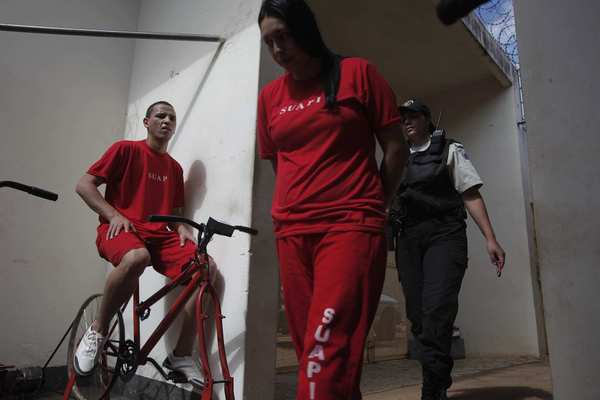Prisoners in a Santa Rita do Sapucai, Brazil, jail keep the wheels turning, eight hours a day, seven days a week on several stationary bikes that are hooked up to portable batteries. The batteries light up the humble boardwalk along this small country town’s river each night. For every three days of doing stints on the bikes, the men shave one day off their sentences. Full story
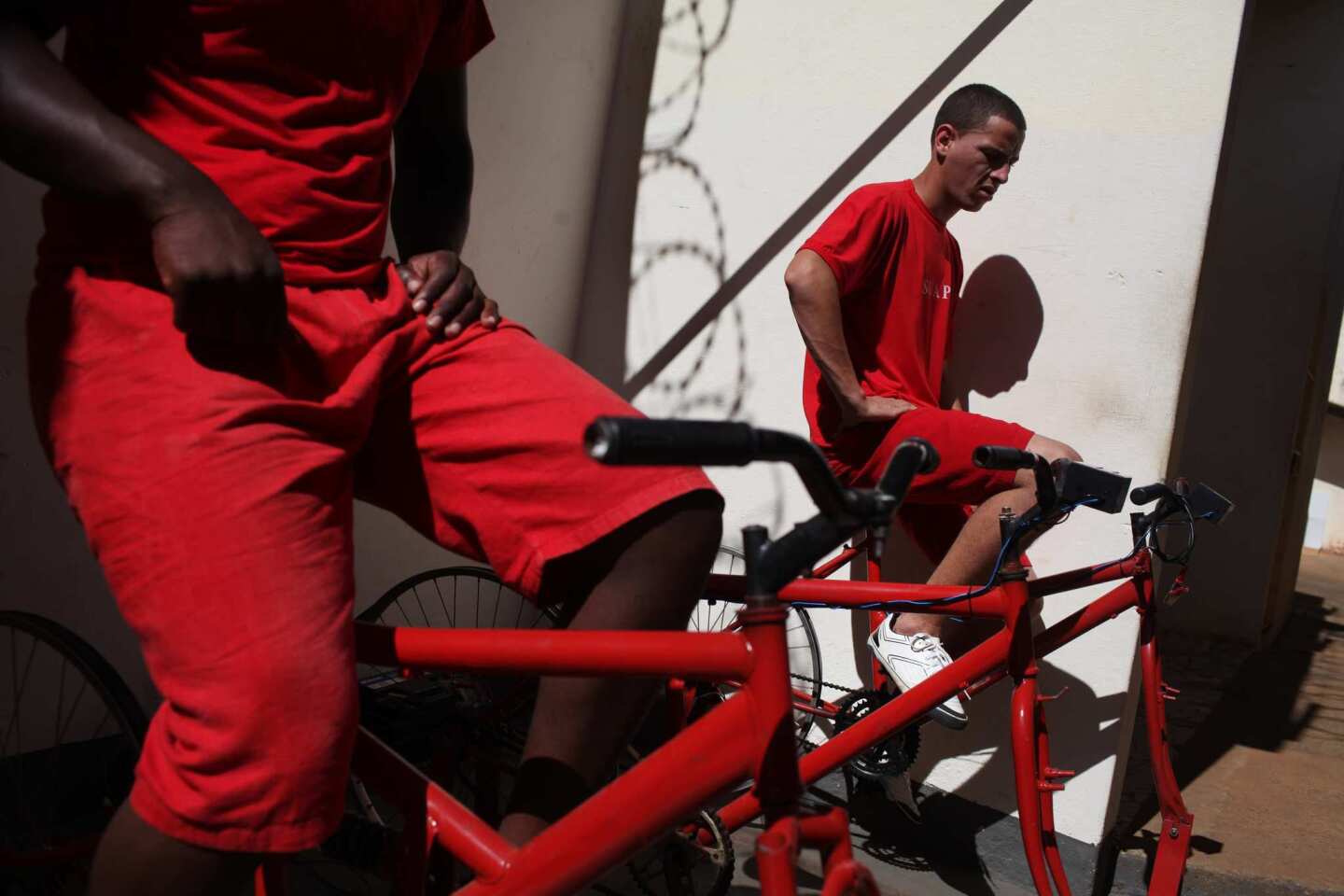
Inmates at the prison in Santa Rita do Sapucai, Brazil, cycle for 30 to 45 minutes, rest and cycle again. (Michael Robinson Chavez / Los Angeles Times)
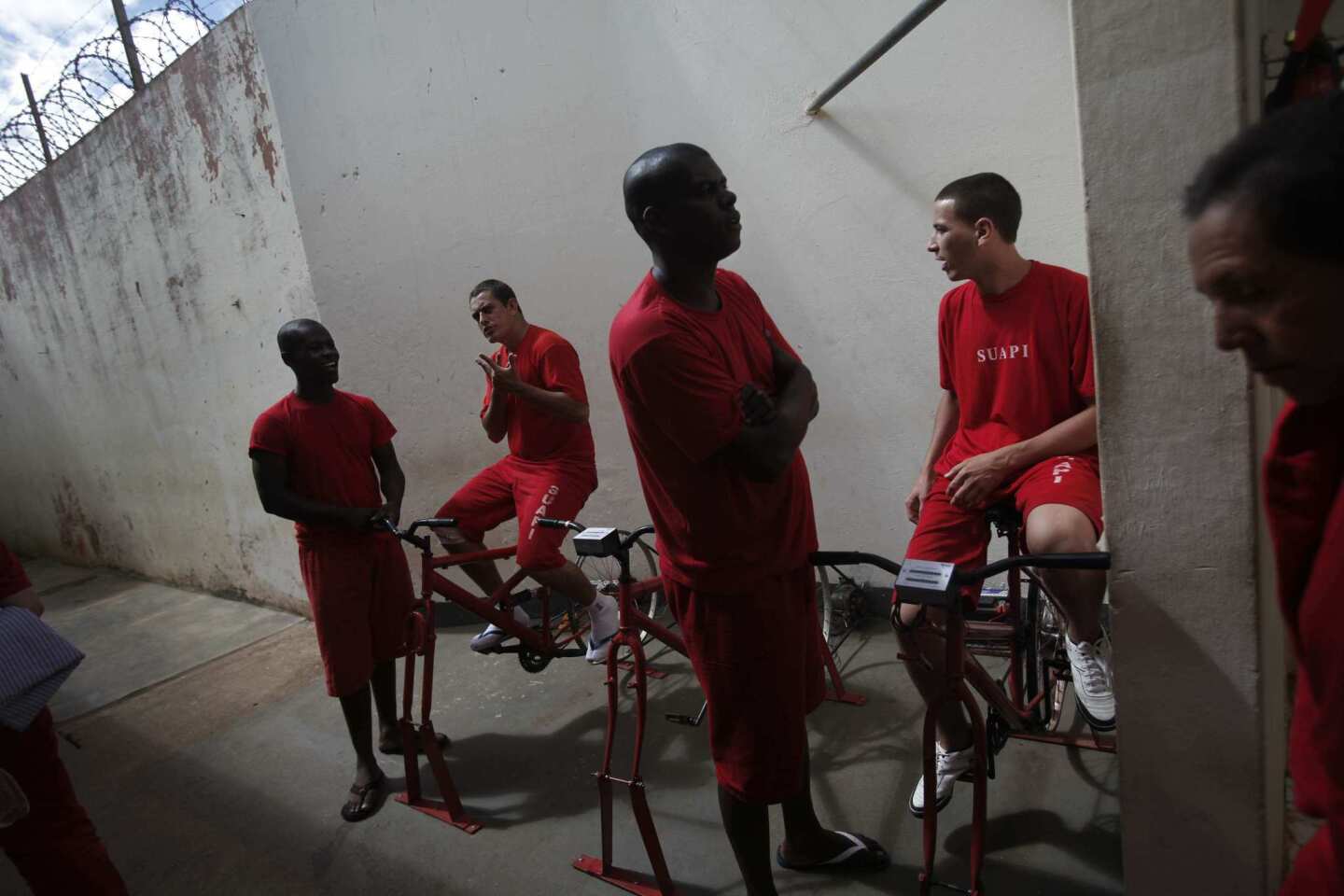
The nine or 10 inmates in the Brazil prison bicycle program each spend about three hours a day generating electricity. (Michael Robinson Chavez / Los Angeles Times)
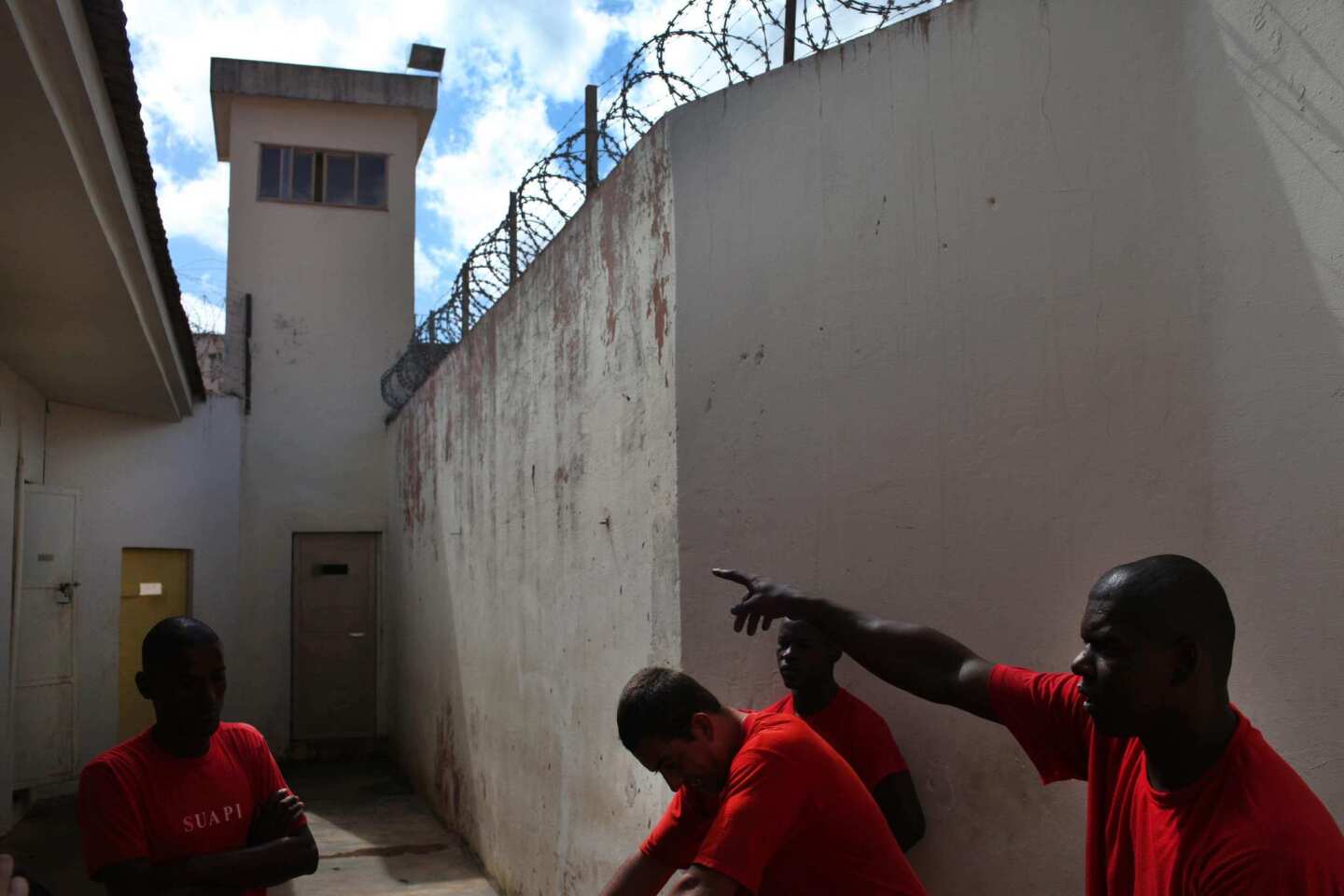
For every three days of doing stints on the bikes, prisoners at Santa Rita do Sapucai in Brazil shave one day off their sentences. (Michael Robinson Chavez / Los Angeles Times)
Advertisement
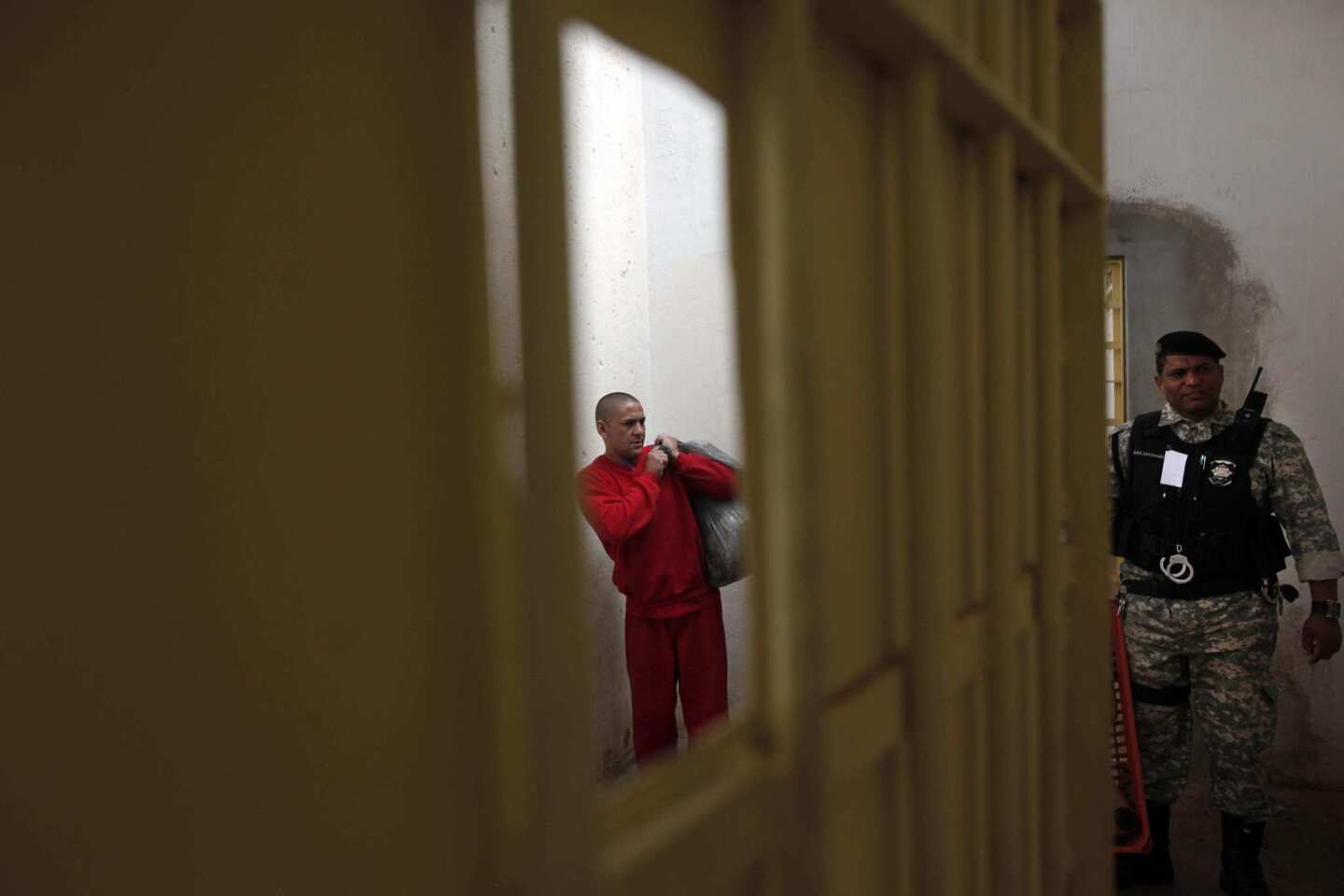
An inmate escorted by a guard carries a bag of laundry out of the prison in Santa Rita do Sapucai, the first in Brazil to have instituted a power-generating program. (Michael Robinson Chavez / Los Angeles Times)
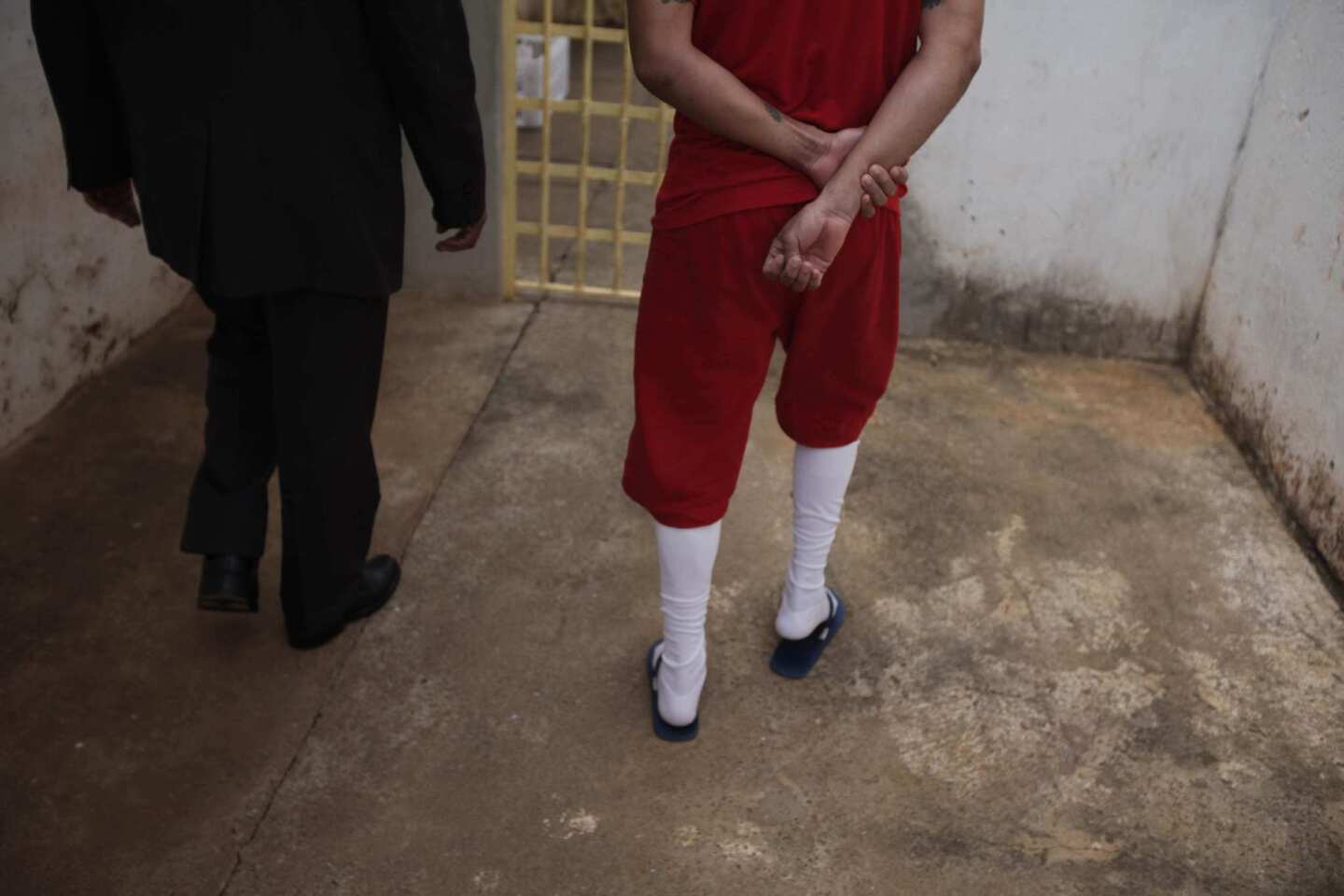
Brazil’s prison population is expected to jump to 850,000 in the next few years, and estimates suggest that more than 80% of those released go on to commit more crimes. “Anything that gets the prisoners involved, that gives them some kind of activity or gives them a chance at education, will increase the likelihood they will re-socialize,” says Ana Paula Diniz de Mello Moreira, coordinator in Brasilia of a presidential program to combat torture, a job that frequently involves investigating prisons. “It’s very unlikely they’ll reenter legal society if they have no alternatives.” (Michael Robinson Chavez / Los Angeles Times)
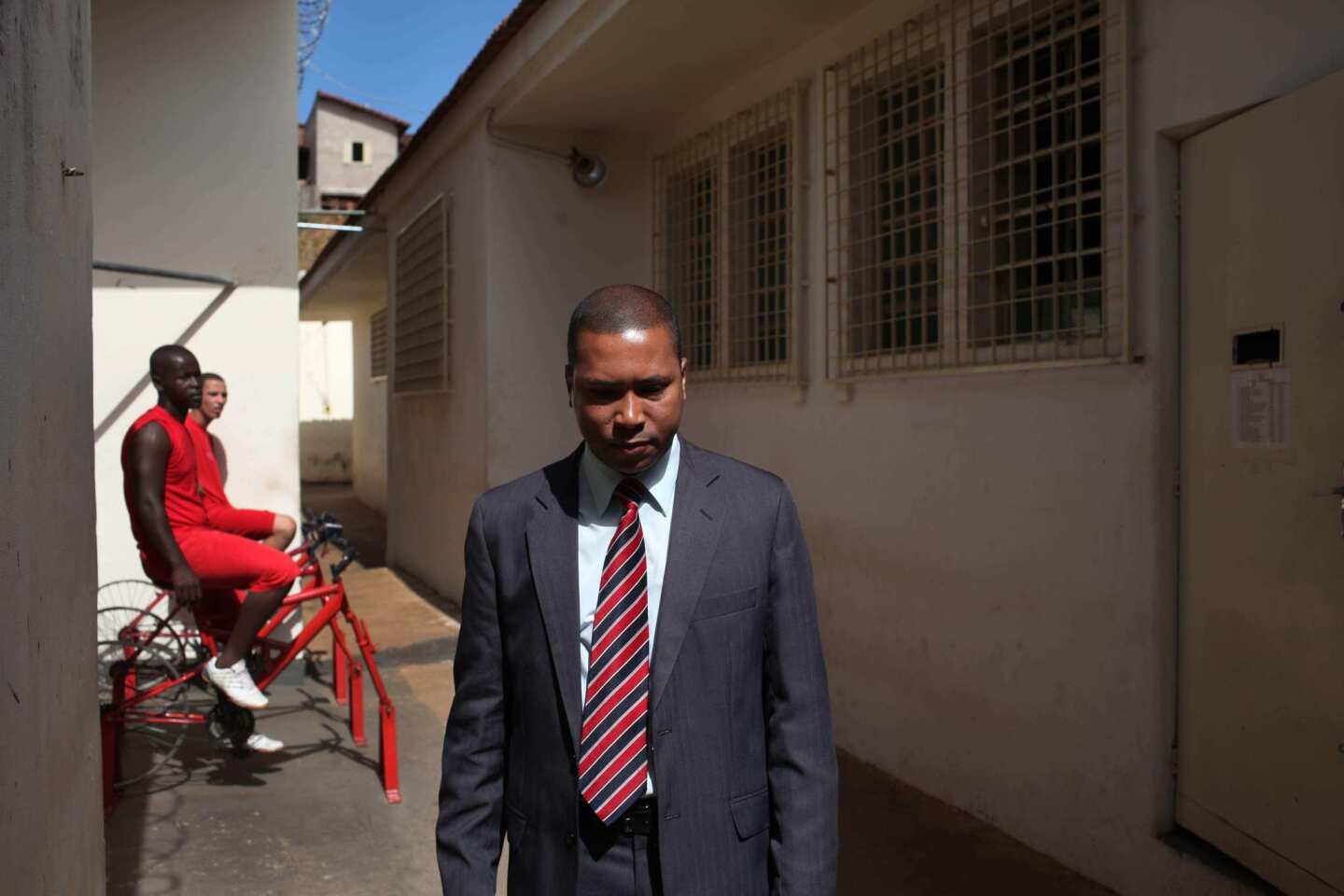
Prison director Gilson Rafael Silva stands in the yard that houses the bicycles. In its first months, the program has proved so popular that guards have reported a jump in good behavior, which moves candidates to the top of the waiting list. “We are trying to give them an opportunity to be active, to learn something or do some work,” Silva says. “We want to try something, because everyone knows the current system doesn’t work.” (Michael Robinson Chavez / Los Angeles Times)
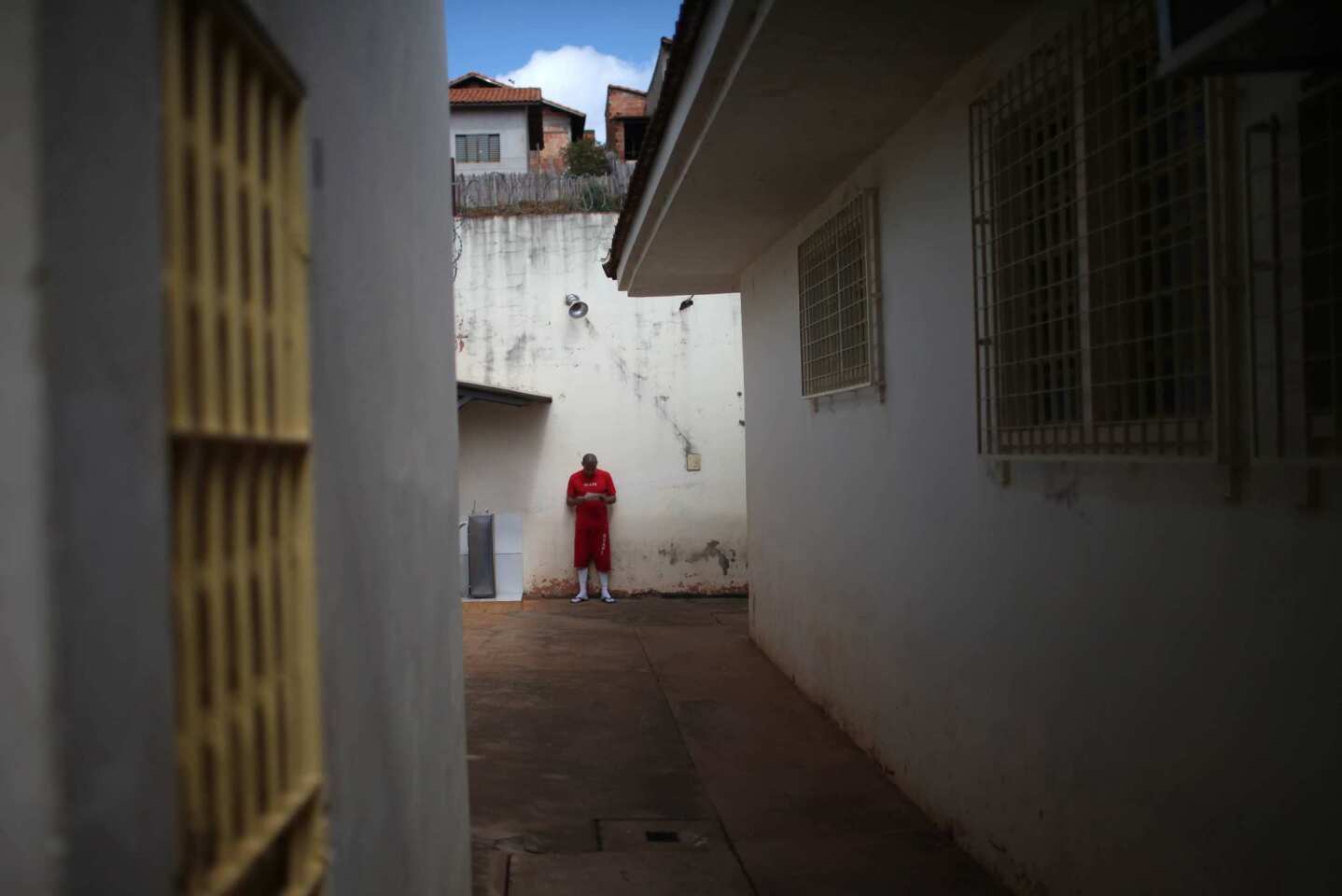
“For too long, no one has wanted to discuss these problems, and society has just wanted to keep prisoners imprisoned, period,” says Jose Henrique Mallman, the judge who came up with the bicycle idea for the prison in Santa Rita do Sapucai, Brazil. “But that has just left us sitting on a time bomb. And those of us in the correctional system have had it explode in our faces, over and over.” (Michael Robinson Chavez / Los Angeles Times)
